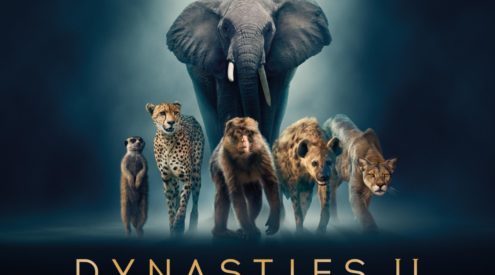We trundled out of Tanzania’s Olduvai Gorge in low range and headed along a dusty track towards a small granite koppie. There we stopped and, keeping a lookout for snakes and Serengeti predators, we climbed the gritty boulders. I knew what we were looking for, but when I saw it, the sheer scale took my breath away.
From the base of the koppie across the flat plain to the distant horizon were wild animals, hundreds of thousands of them in tightly bunched streams, a mass in motion. The Great Migration had arrived on Ngorongoro Plains.
Early the next morning, we drove north towards central Serengeti and stopped among the moving creatures. Wildebeest, zebras and Thomson’s gazelles were everywhere, but it was the grunting wildebeest that were constantly on the go in numbers that defied imagination.
With a sun-spangled urge to move, they follow the storms in a 480-kilometre annual cycle of migration which takes them from the Gol Mountains in northwest Serengeti through Mwasa and the crocodile-infested rivers of the western corridor. From there, they turn northwest to the Masai Mara in Kenya, then down to southern Serengeti and Ngorongoro Plains. It’s the largest mammal migration on Earth.
The odd thing was they weren’t going in the same direction. Some of the streams were heading towards the sunrise, others across it, still others west. What did this mean?
As best as I could in the mass of dark bodies, I kept my eye on the leader of a stream. It held its position for a while, then relinquished it to others, though the stream held purpose and direction. I had a feeling I’d seen this behaviour before, then remembered: it resembled African army ants. The wildebeest were swarming.
Instead of ending up in a tangle of horns and legs, as logic suggests they should, they were flowing as one, a super organism with purpose and direction. It’s something shoaling fish manage, as do some birds, bees and even minute krill.
It turns out that swarming is extraordinarily complex behaviour that’s been puzzling animal behaviourists, mathematicians and computer modellers for ages. The big question isn’t why creatures swarm, but how they manage to avoid collisions despite changes of direction.
In 1986, swarm behaviour was replicated on computer by American 3D animator Craig Reynolds in a programme he called Boids. From it he derived three rules that individuals in a swarm need to obey:
Separation: steer to avoid crowding your neighbours.
Alignment: steer towards the average heading of your neighbours.
Cohesion: steer to move towards the average position (centre of the mass).
Later other sub-rules such as obstacle avoidance, goalseeking, smell and fear were added. The core principle is called emergent behaviour, which is dynamic, ever changing, but has coherence over time. Because individuals obey simple rules, central coordination is unnecessary.
This works well for wildebeest. The triggers are storms, the goal is fresh grass and a collective intelligence hardwired into their genetic code keeps them on track along ancestral paths.
But what shapes these paths? Each new cycle begins with dung beetles burying balls from the previous pass of the migration, fertilising the soil and providing compost for grass awaiting rain to feed millions of mouths.
Trees can’t easily take hold in the shallow soil of the plains, but bushes can, providing cover for predators and scavengers, which also have the migration clock etched into their genes. If wildebeest spread across the plain evenly and widely, they’d be easy pickings, a cookie jar with food wherever you look. By clumping together and moving on different trajectories, but with a similar overall goal, they create holes in the pattern that keeps the predators guessing.
Lions have territories and await the thundering feast, but they never know exactly when the herds will be there or quite where or how they’ll move. Get your calculations wrong and you’ve lost the herd. And, of course, a mass of animals that acts in unison also means a great many wary eyes, ears and noses alert for trouble.
Still, there’s always enough food on the hoof to go round. In an extraordinary biological synchrony, the wildebeest give birth to their calves almost simultaneously. Five out of six youngsters never complete the migration cycle, many ripped away from the herd by huge Nile crocs as they cross the Mara and Grumeti rivers, the rest picked off by lions, cheetahs and hyenas. What is logical for the many can be folly for the few. And the predators know their business.
All migrating animals make dangerous bargains in their search for food – and risk becoming food themselves. They have to surmount formidable barriers, chasing rains that may not fall, grasses that may not grow. When Nature doesn’t hold up her end of the bargain they’re stalked by starvation.
But the courage of numbers and a swarm intelligence born of millions of years of trial and error whispers: ‘If you want to live, move.’ And, in their millions, the Serengeti wildebeest obey and thrive.
See The Great Migration for yourself
If you want to witness this spectacle, Jenman Safaris has a 10-day trip to northern Tanzania that includes the Serengeti, Ngorongoro Crater and Lake Natron. Contact them on www.jenman.travel or email [email protected].

















